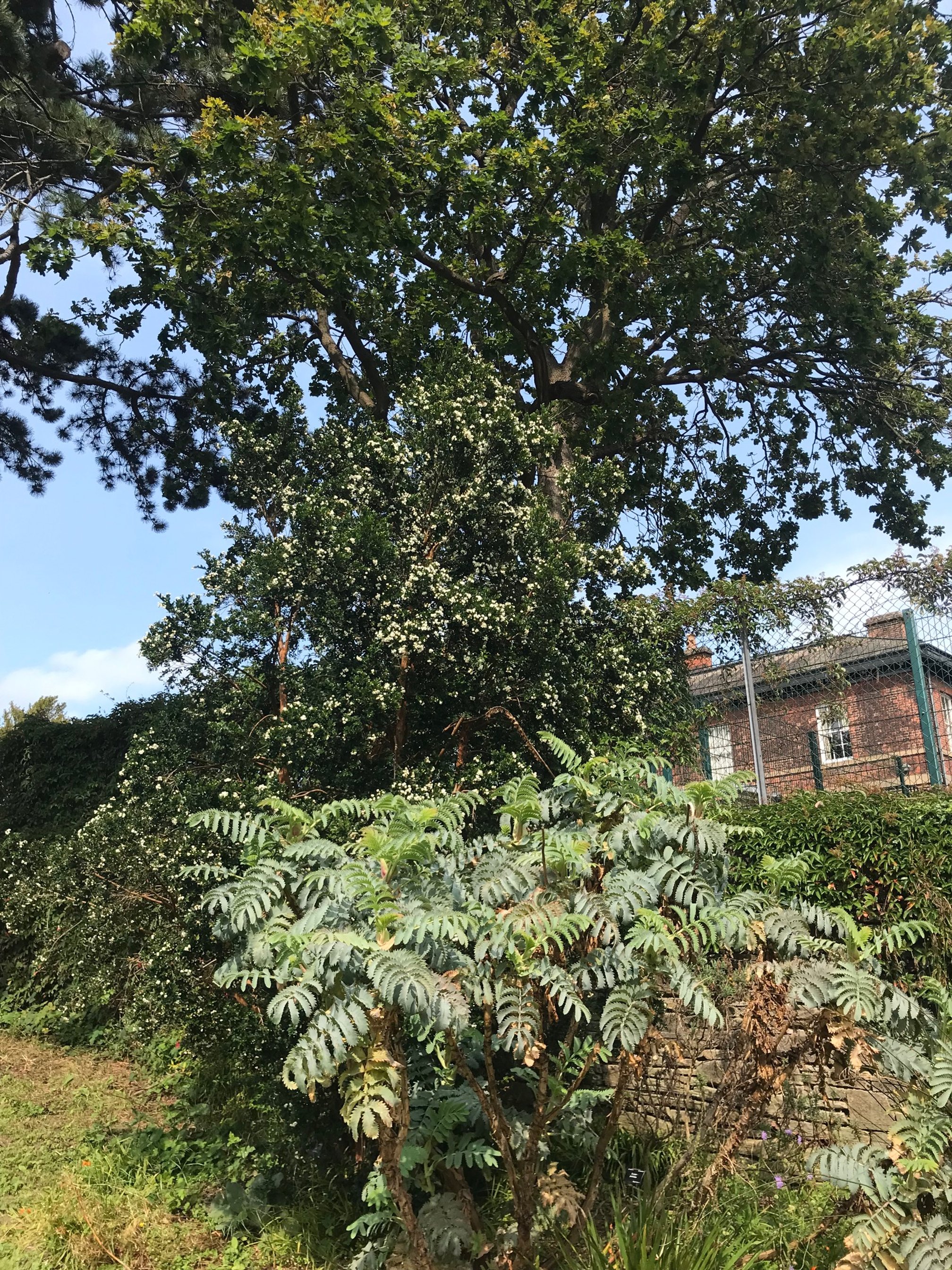Luma apiculata
The Chilean myrtle is a member of the Myrtaceae family which also includes the genus eucalyptus or gum trees and the myrtle, Myrtis communis, a particularly close relative. In common with many other members of the Myrtaceae, it is evergreen with decorative peeling bark and exotic looking flowers containing many stamens.
Luma apiculata is an outstanding shrub with abundant white fragrant flowers, beautiful cinnamon peeling bark and all set within deep evergreen leaves. The flowers are followed by red and black fruits which are edible and sweet.
This plant is hardy throughout much of the UK withstanding temperatures down to -10C and has traditionally grown well in the milder south-west of England where it can reach 10-15 metres in height. It is a native of the temperate forests of Chile and Argentina and was introduced into the UK by William Lobb in 1844, a British plant collector employed by Veitch Nurseries of Exeter.
It is located in Osborn’s Field (J on the Gardens map) and is found just north of the South African border (number 4 on the map), which itself has much dazzling late summer colour to admire.


Luma apiculata in Osborn’s Field. The lower photo shows it sheltered by a mature sycamore, Acer pseudoplatanus, with Melianthus major in the foreground.
